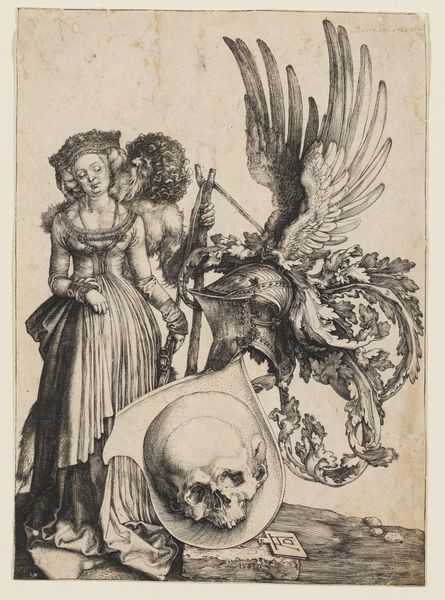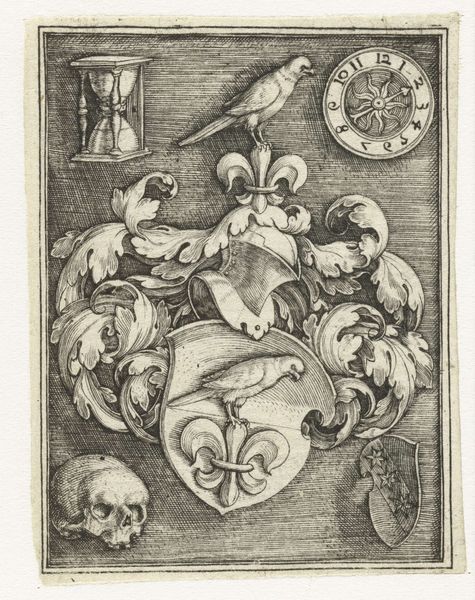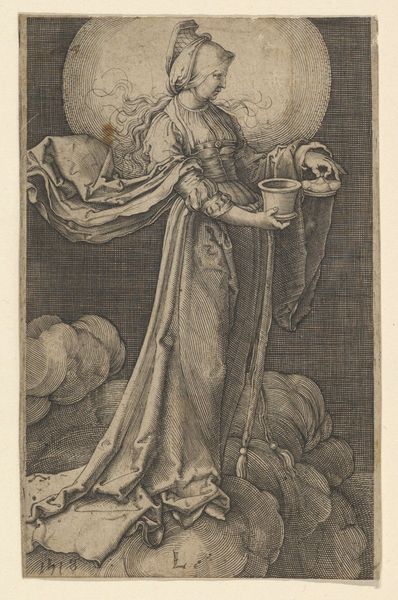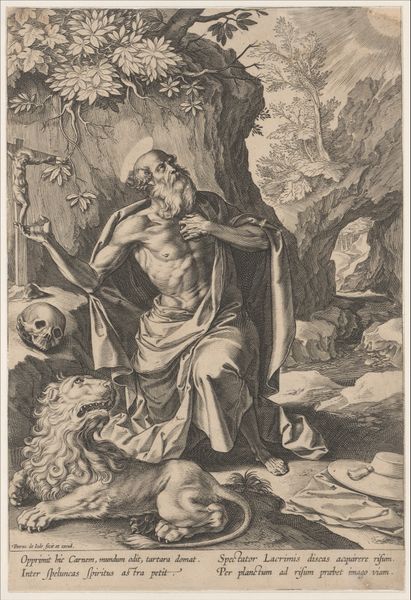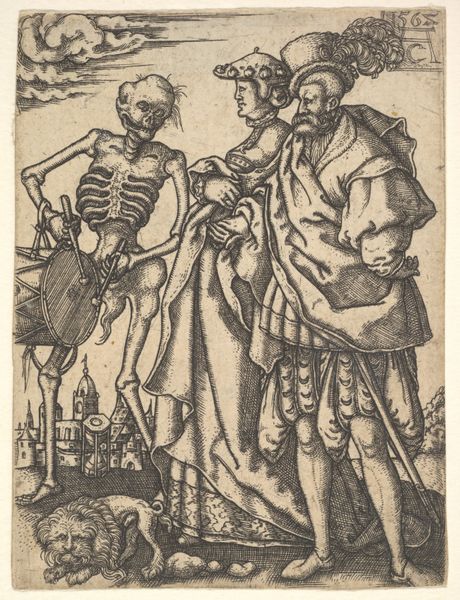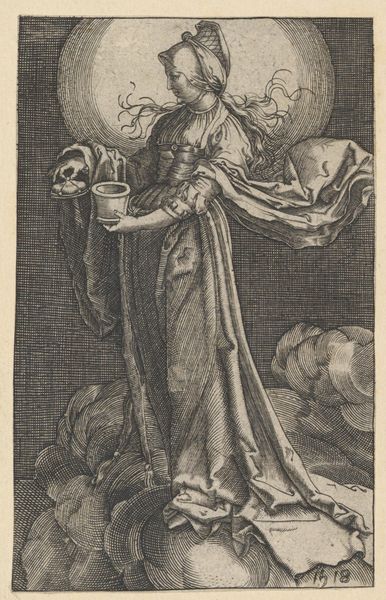
Dimensions: height 218 mm, width 156 mm
Copyright: Rijks Museum: Open Domain
Albrecht Dürer crafted this intriguing engraving, "Wapenschild met vrouw en wildeman," with meticulous detail. The composition is immediately striking: Dürer employs strong diagonal lines to guide our eyes across the scene, from the vulnerable skull at the bottom to the crest with wings at the top. He juxtaposes life and death by placing a skull at the base of a shield surmounted by leaves and a winged crest. To the left a wild man whispers into the ear of a woman with a melancholic expression, a formal choice that suggests a narrative tension between savagery and civilization. Dürer's mastery of line creates texture and depth, from the woman's flowing gown to the wild man's coarse fur, yet it raises semiotic questions rather than answers. What do these contrasting forms signify, and how do they challenge fixed notions of power, gender, and morality? The image serves as a tableau of contrasts, inviting us to question the symbolic systems and cultural codes of Dürer’s time. It's a vivid example of how printmaking can be used to engage with philosophical discourse.
Comments
No comments
Be the first to comment and join the conversation on the ultimate creative platform.
